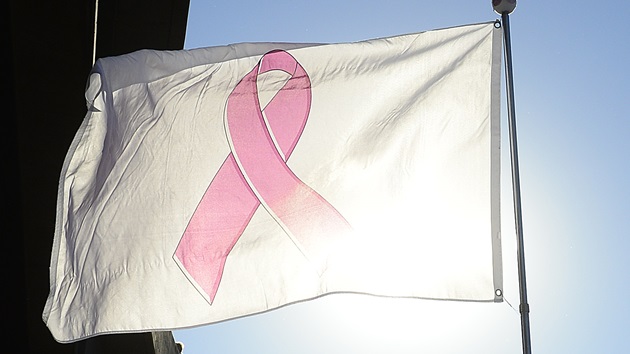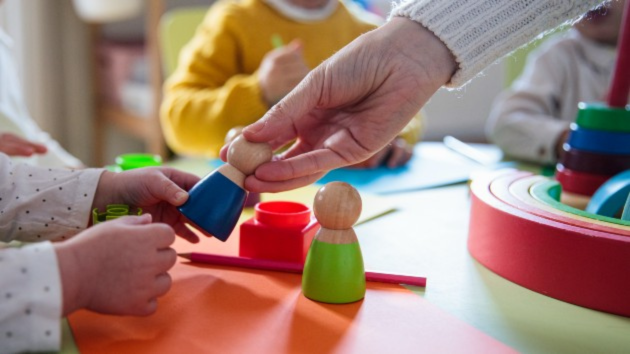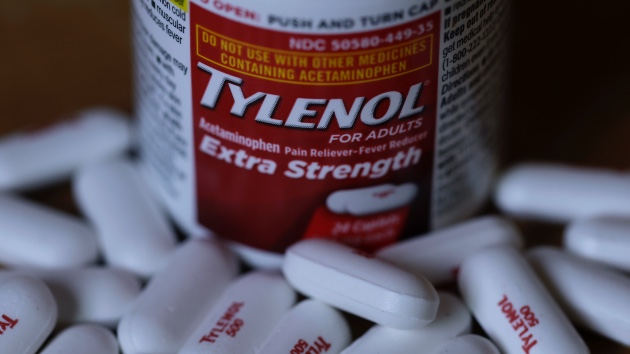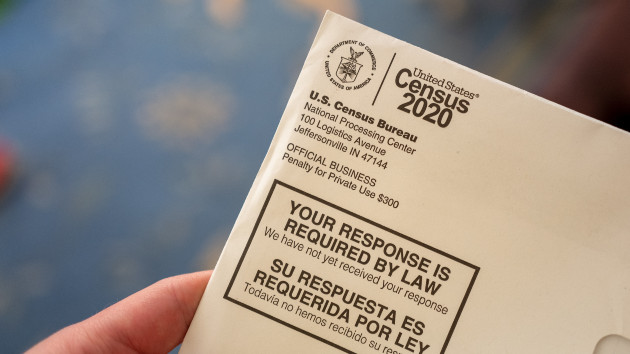Inside woman’s long COVID battle as US marks second anniversary of coronavirus pandemic
Written by luck on March 11, 2022
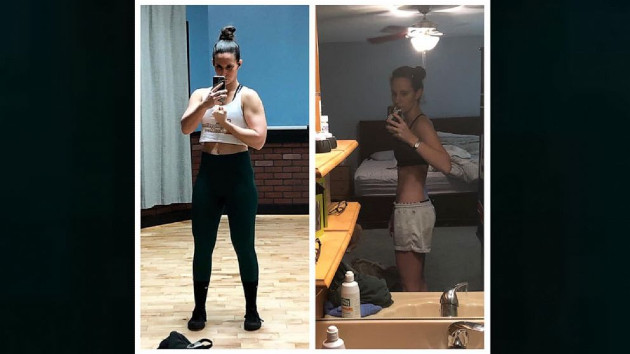
(NEW YORK) — Nicole Wahler was in her mid-20s and in the best shape of her life when she tested positive for COVID-19 in June 2020.
Now, nearly two years later, Wahler, 28, said she is still suffering from the effects of the virus, which to date has killed nearly six million people around the world.
“My body is fighting so many different battles on a daily basis,” the New Jersey resident told ABC News’ Good Morning America. “I’ve gotten to the point where I’m eating about five different foods but that’s all I can eat, and if I don’t have proper nutrition to fight those battles, I’m not going to be able to fight, and I’m just going to continue to deteriorate.”
Wahler said she started feeling symptoms of COVID-19 in March, just as the virus was spreading more quickly in the United States. When she tested positive for the virus in June, she said she thought she would have COVID-19 for two weeks, the typical duration of the virus, and improve.
Prior to COVID, Wahler said she was very active, including doing strength workouts several days a week. Her only preexisting condition was Crohn’s disease — a chronic disease that causes inflammation in the gastrointestinal (GI) tract– but it was well-controlled, according to Wahler.
“Things just never got better,” she said. “My chest pain grew worse. I started having tachycardia, increased heart rate; intense brain fog to the point I couldn’t have a coherent conversation. I would forget what I was saying in the middle of a sentence.”
Several months after testing positive for COVID-19, Wahler was diagnosed postural orthostatic tachycardia syndrome (POTS), a common condition that happens when not enough blood returns to the heart when moving from a lying down to standing up position, causing a rapid heart rate, lightheadedness or fainting, according to the National Institutes of Health (NIH).
While the cause of POTS is not fully clear, it can be triggered by a viral illness, according to the NIH.
Wahler said she has also been diagnosed with post-viral fatigue syndrome, which has made it hard to talk or even open her eyes at times.
In the months following her COVID diagnosis, Wahler was also diagnosed with mast cell activation syndrome (MCAS), which “causes a person to have repeated severe allergy symptoms affecting several body systems,” according to the NIH. The syndrome, for which there is no known cause, has symptoms including abdominal pain, cramping, rapid pulse and low blood pressure.
In Wahler’s case, she said she has developed allergic reactions to foods, causing her to lose over 30 pounds in a period of a few months.
Previously a middle and high school-level science teacher and head of her high school’s math and science departments, Wahler had to give up her job and stop teaching because of long COVID.
A day in the life with long COVID
Nearly two years after first contracting COVID-19, Wahler said she is taking her recovery day by day.
She said she can now see a light at the end of the tunnel, but said it is still “far away and I have a lot of work to do.”
Because none of her illnesses have precise cures, Wahler has incorporated a treatment plan that includes a mixture of physical therapy, medication, breath work and cognitive exercises to improve her brain function.
On a typical day, Wahler said she has 15 alarms set on her phone to remind her to do daily tasks as routine as waking up and brushing her teeth.
With her first alarm, she will wake up and do breathing exercises, to help with POTS, and take her first medications. From there, her day is scheduled, moving from one activity, like eating a meal or doing physical therapy stretches, to a period of rest to let her body recover.
“I am too sick to do ‘normal’ daily routine things like do dishes or laundry,” she said. “So when I’m not medicating, stretching, etc., I’m usually resting because those tasks take a lot of energy out of me.”
Wahler also has doctors’ appointments mixed into her schedule, though most are via telehealth because it is too taxing for her to go in-person. She said she is wheelchair-bound when out of the house, relying on her mom for help.
Wahler’s physical therapy sessions are virtual and are focused, she said, on getting her strong enough to sit and then eventually stand to do exercises.
To help cope with her mental health and to work on improving her brain function, Wahler also sets a daily intention and says daily affirmations, followed by an evening mediation before bed.
“Some days, it’s really hard, incredibly hard,” she said. “That’s when you really have to dig deep and just think, well, what am I grateful for, and I’m grateful for my niece and nephew. I’m grateful for my friends that support me on an hour-to-hour basis.”
She said she still struggles with recurrent complications, like shortness of breath, but is celebrating small successes, like adding two new foods into her diet and being able to shower on her own once a week.
Wahler said she has not been vaccinated against COVID-19 due to her compromised immune system, and therefore does not venture far beyond her home.
“In the state that I’m in, I can’t risk getting COVID again,” she said. “I’m confident that the physical health that I was in the first time I got COVID prevented me from dying, so now if I got COVID, again, I’m not sure how the cards would play out.”
She continued, “But once my body is in a better state, and a lot of my chronic illnesses are back under control, 1,000%, I will definitely be getting the vaccine.”
A chronic condition with ‘no explanation’
As the U.S. now enters the third year of the coronavirus pandemic, Wahler is not alone in suffering from lingering complications due to COVID-19.
Studies have found that anywhere from 30% to more than 50% of COVID-19 survivors suffer complications that linger for weeks or months after they no longer test positive for the virus.
The complications can range in severity and type, including everything from fatigue, loss of taste or smell, brain fog and difficulty breathing to the onset of autoimmune conditions and changes to body systems including the heart, lung, kidney and skin, according to the Centers for Disease Control and Prevention (CDC).
The CDC defines post-COVID — also known as long COVID, long-haul COVID, post-acute COVID-19 and chronic COVID — as “ongoing health problems people can experience four or more weeks after first being infected with the virus that causes COVID-19.”
Wahler said she felt alone in her battle with post-COVID until she found support groups online and discovered her story was not an outlier.
“It was life-changing, being able to connect with so many other people that were going through exactly what I was going through, almost on the exact timeline,” she said. “I have a pretty severe case of long COVID, but there are a lot of other people who do have it worse.”
According to the CDC, people of all ages can develop long COVID, although it is more common in adults than in children and teens.
In response to the need, dozens of hospitals across the U.S. have opened post-COVID clinics to support patients who experience ongoing symptoms weeks or months after being cleared of the virus.
Dr. Fernando Carnavali, an internal medicine specialist, is the coordinator of the Center for Post-COVID Care at Mount Sinai in New York City, which opened its doors in May 2020.
Carnavali said the center takes an individualized approach to care because each case of post-COVID is so different. Patients, for example, see specialists in everything from primary care and cardiology to radiology, physical and occupational therapy, social work and neurology.
“The Center for Post-COVID Care at Mount Sinai was the first in the country offering comprehensive care and a place for people to be heard and listened to,” Carnavali told GMA. “I think that one of the things that was obvious from the very beginning was that people needed to have a place where they were going to be listened to carefully.”
Since its opening nearly two years ago, the center has seen more than 3,000 patients, according to Dr. David Putrino, director of rehabilitation innovation for Mount Sinai Health System.
Putrino said patients with long COVID, on average, receive care for three to six months, and it can be a long process to even get a patient to rehabilitation.
“Much of the early evaluation is going organ system to organ system making sure that some of the more troubling symptoms that are being reported don’t have a very direct cause that’s related to serious organ pathology,” he said. “Long COVID is a multi-system condition. It affects 10 organ systems. It has over 200 recognized symptoms, and so that process can sometimes take quite some time to really make sure that patients are safe to proceed with rehabilitation.”
Once patients start the rehab process, they receive a slow and steady pace of treatment from professionals trained to work specifically with long COVID patients.
“As clinicians and as patients, this mindset of no pain, no gain has been hard wired into us,” he said. “What is different about long COVID is it’s the exact opposite. What we need to do is pause and approach rehabilitation from a different perspective where we need to be very targeted about the therapies that we apply. We need to be very strategic about the level of exertion that we put our patients through.”
Many long COVID patients present with dysautonomia — the improper functioning of the autonomic nervous system (ANS) that regulates bodily functions like breathing and digestion — so Mount Sinai’s physical therapists are trained in autonomic rehabilitation protocol, which slowly retrains the body to have appropriate response to movement, activity and exertion, according to Putrino.
Copyright © 2022, ABC Audio. All rights reserved.
